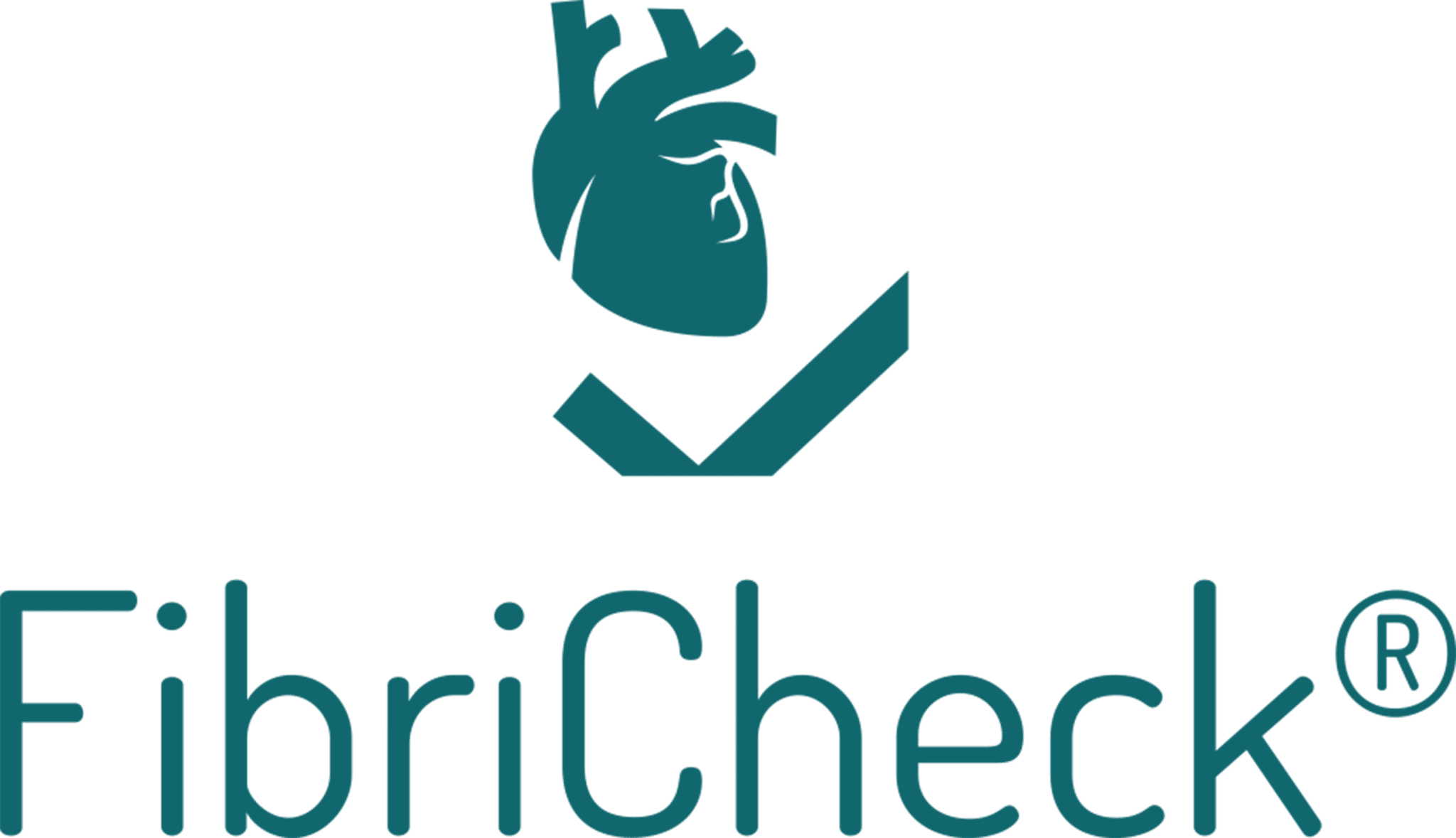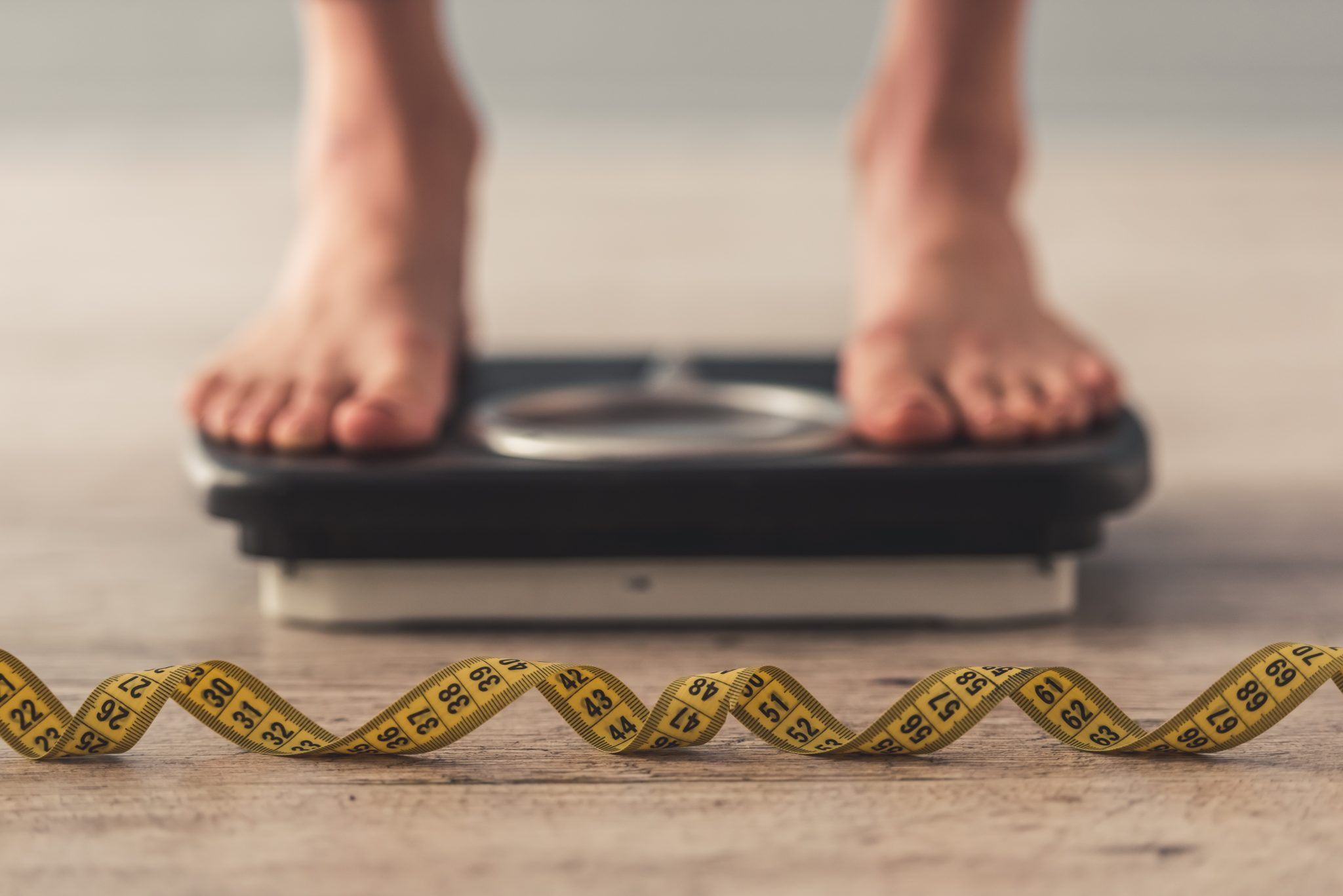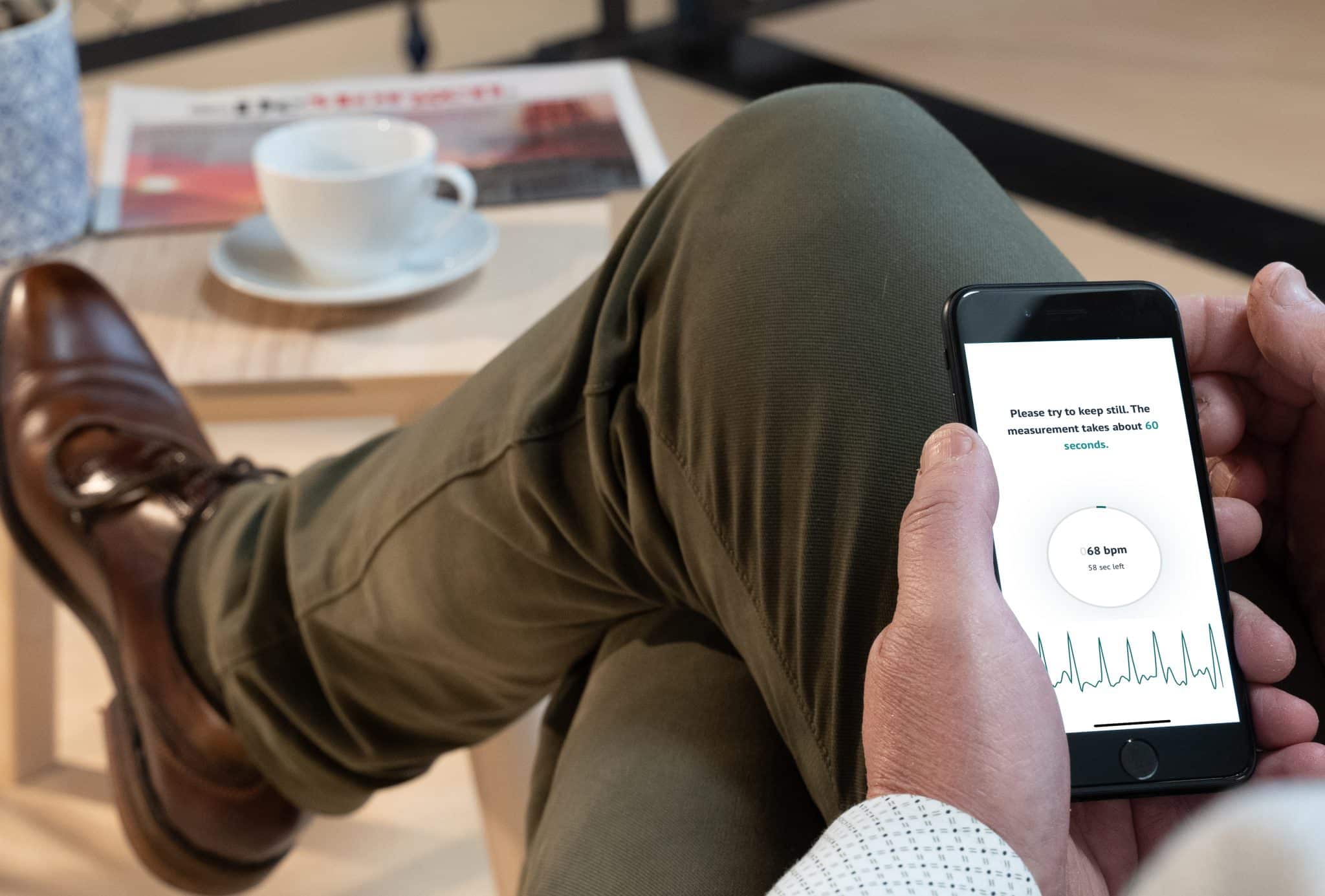Heart rate and heart rhythm are two important indicators of your heart health. Your heart rate is the number of heartbeats per minute, whereas your heart rhythm tells you something more about how regular these heart beats are. In this article, we will have a look at heart rate and heart rhythm, and explain how you can measure them.
What is your heart rate?
The heart rate can be defined as the number of heartbeats per minute. For healthy adults, the normal heart rate should be between 40 and 110 beats per minute at rest. Your heart rate can change at any given time, depending on your level of activity and stress. Smoking or drinking alcohol, and some sorts of medication can affect your resting heart rate as well. Regularly exercising with moderate intensity can help decrease your resting heart rate.
Your resting heart rate can be a good indicator of your overall health. A heart rate on the normal, lower side is often associated with higher physical fitness, which in turn is associated with better heart health. A higher resting heart rate is associated with lower physical fitness, and an increased risk of heart disease.
How can you measure your heart rate?
You can measure your heart rate by taking your pulse for one minute and counting how many times your heart beats. The best places to take your pulse are in your wrist or in your neck. Your pulse can be found in your wrist at the base of the thumb. You can measure it with the palm of your hand facing upwards, using the index and middle finger of your other hand. It is important not to use the thumb to measure your heart rate, as the thumb has a pulse of its own. In the neck you can find your pulse between the outer part of your jaw and your windpipe.
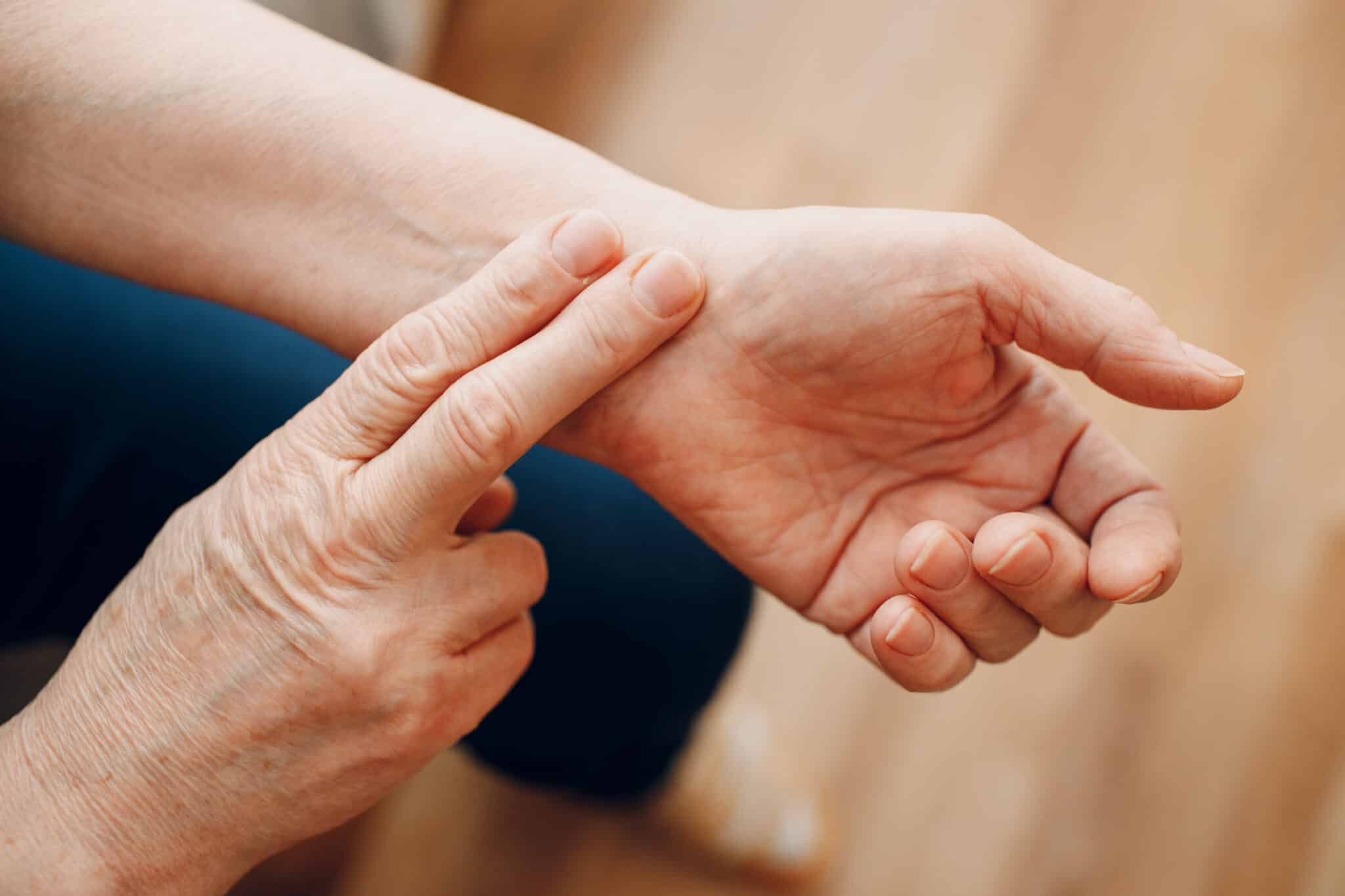
Besides this traditional approach you can also measure your heart rate easily with FibriCheck. Each FibriCheck measurement can give you an insight in both your heart rate and heart rhythm at the same time. By taking measurements regularly, you can detect changes quickly.
The ideal time to measure your heart rate is in the morning when you just woke up. It is advised to sit still for 5 to 10 minutes before measuring your heart rate, as this allows you to measure your heart rate in its resting state. You should also try to avoid measuring your heart rate after a stressful event, or after having consumed caffeine.
What is your heart rhythm?
Your heart rhythm can give you an insight on whether or not the beating of your heart is regular or irregular in nature. As opposed to your heart rate, your heart rhythm should not change throughout the day. An irregular heart rhythm may be caused by a heart rhythm disorder.
How can you measure your heart rhythm?
You can easily measure your heart rhythm at any time and any place with FibriCheck. With our PPG (photoplethysmography)-technology, you can get accurate results of your heart rhythm in real-time, which gives you insights into your heart health.
Your heart rhythm can also be measured by your cardiologist using an ECG (electrocardiogram). This can only be done under supervision of a physician, who will measure the electrical activity of your heart using electrodes on your skin. This is however only a momentary recording of your heart rhythm. As heart rhythm disorders are often unpredictable in nature, it is advised to check your heart rhythm regularly with FibriCheck. This allows a faster detection of irregularities, as well as the possibility to monitor yourself after you have been diagnosed with a heart rhythm disorder.
A visualization of the difference between heart rate and heart rhythm
Let’s have a look at an example to make the difference between heart rate and heart rhythm more clear: both graphs below show a resting heart rate of 60 beats per minute, which is within the normal range. The first graph shows regular intervals between each heartbeat, which means that this heart rhythm is regular during this measurement. The second graph shows the same heart rate, but the heartbeats do not happen with the same frequency. This indicates that this heart rhythm is irregular.
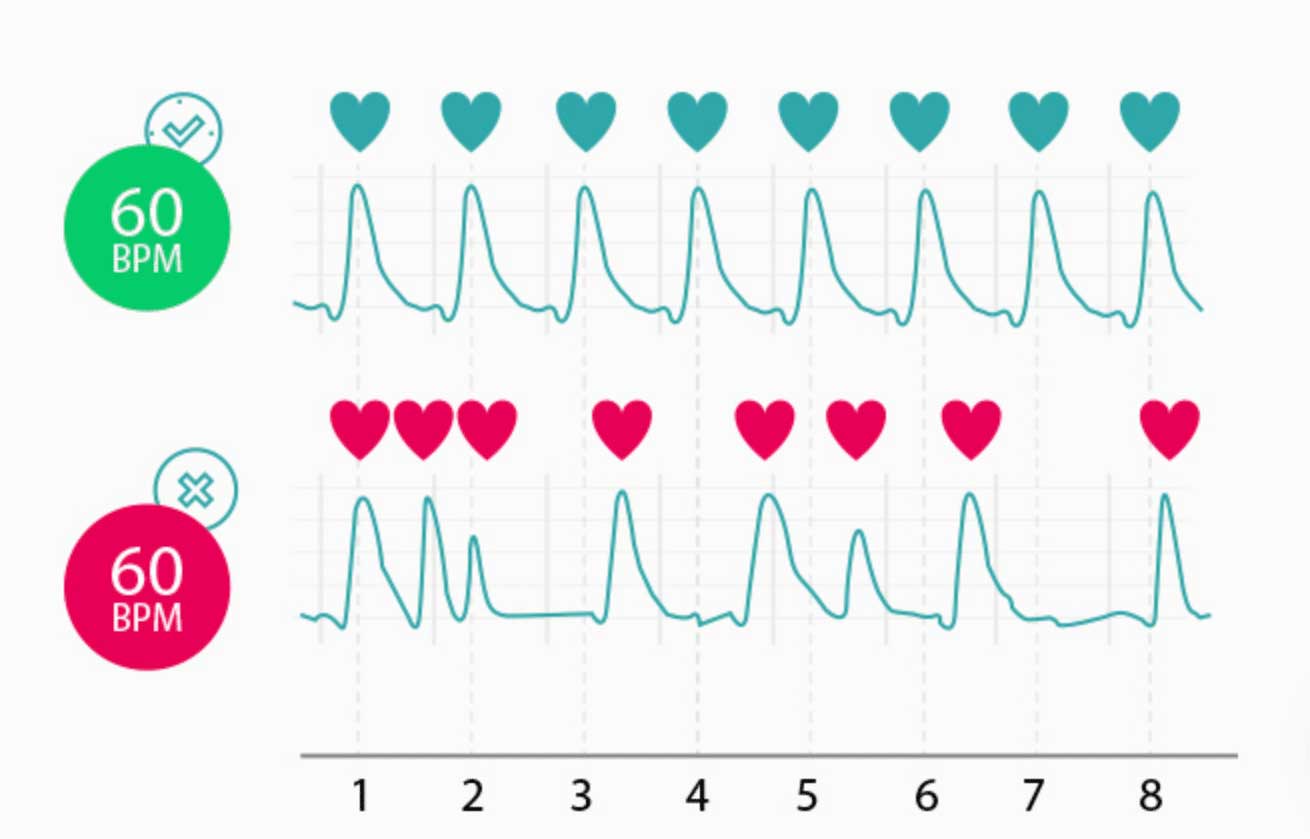
Objectifying your heart rhythm is easy with FibriCheck. With each measurement, you will receive a report from us with actionable insights. This will help you determine whether or not you should see a physician to follow up on your heart rhythm. It is important to know whether you have an irregular heart rhythm, as arrhythmias such as atrial fibrillation can significantly increase your risk of stroke. If you are worried about your heart health, then it is recommended to consult your physician.
At FibriCheck, we recommend you to measure your heart rhythm at least twice every day and whenever you are experiencing symptoms.
Created on June 20th, 2019 at 12:03 pm
Last updated on September 20th, 2023 at 04:23 pm
